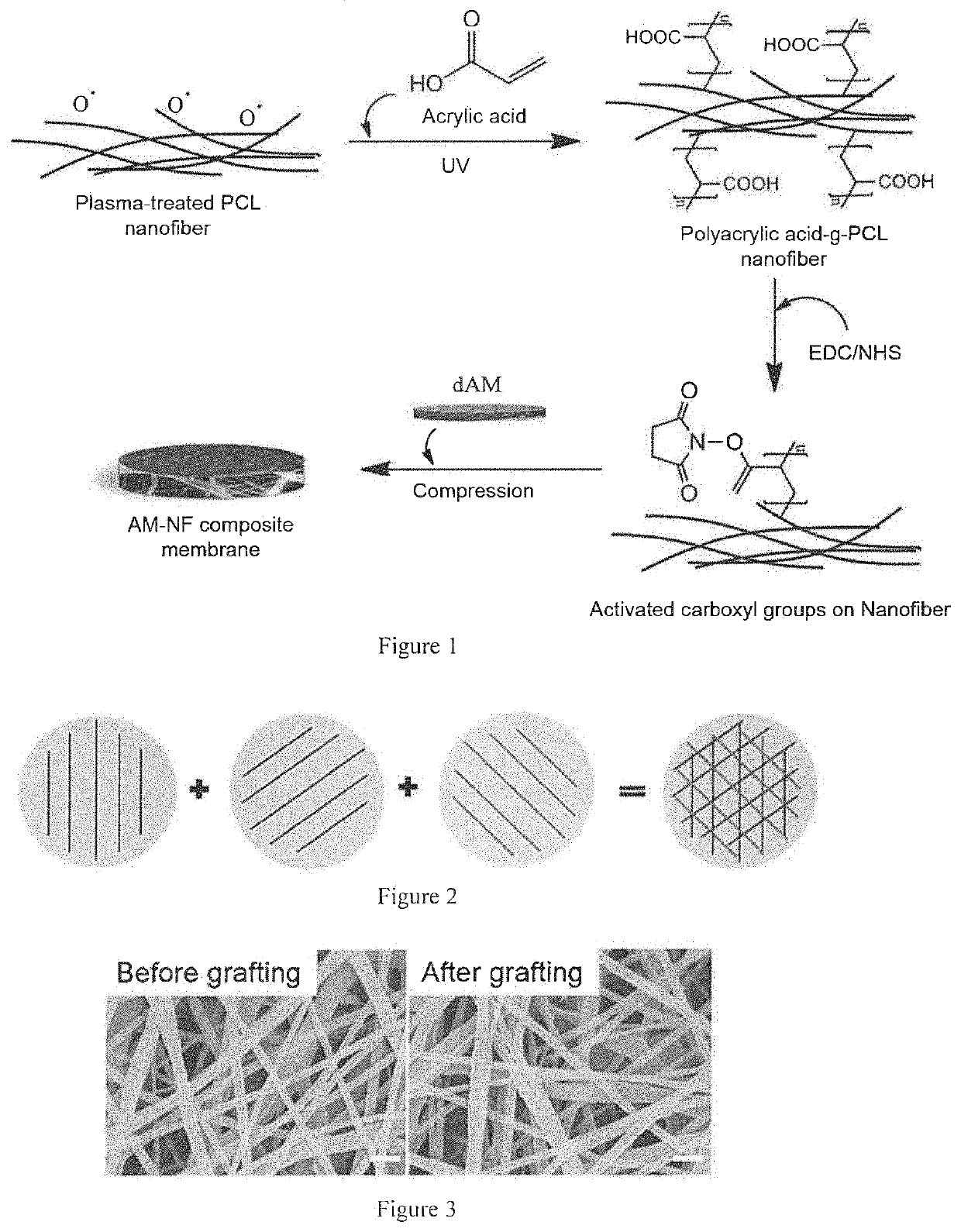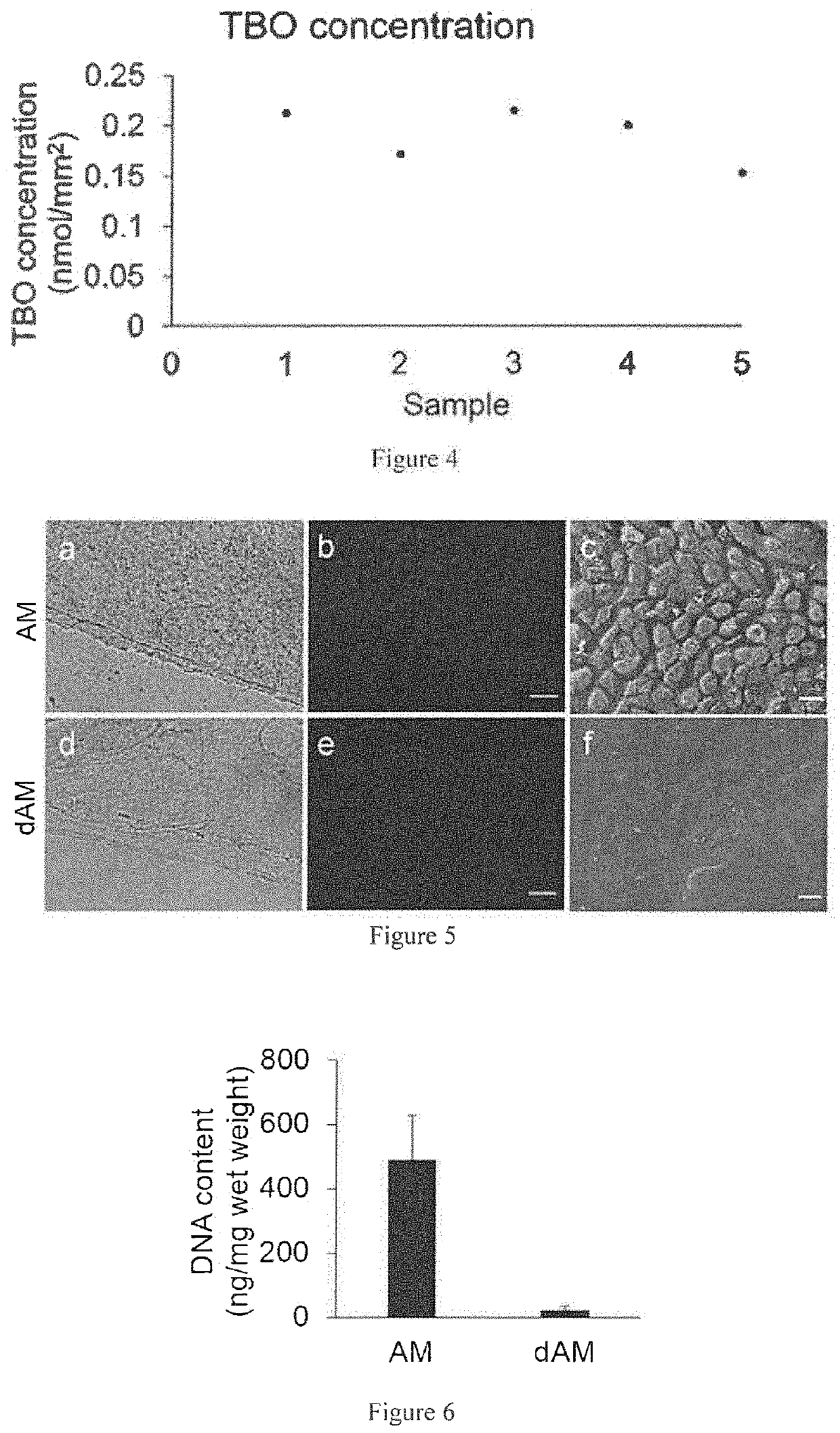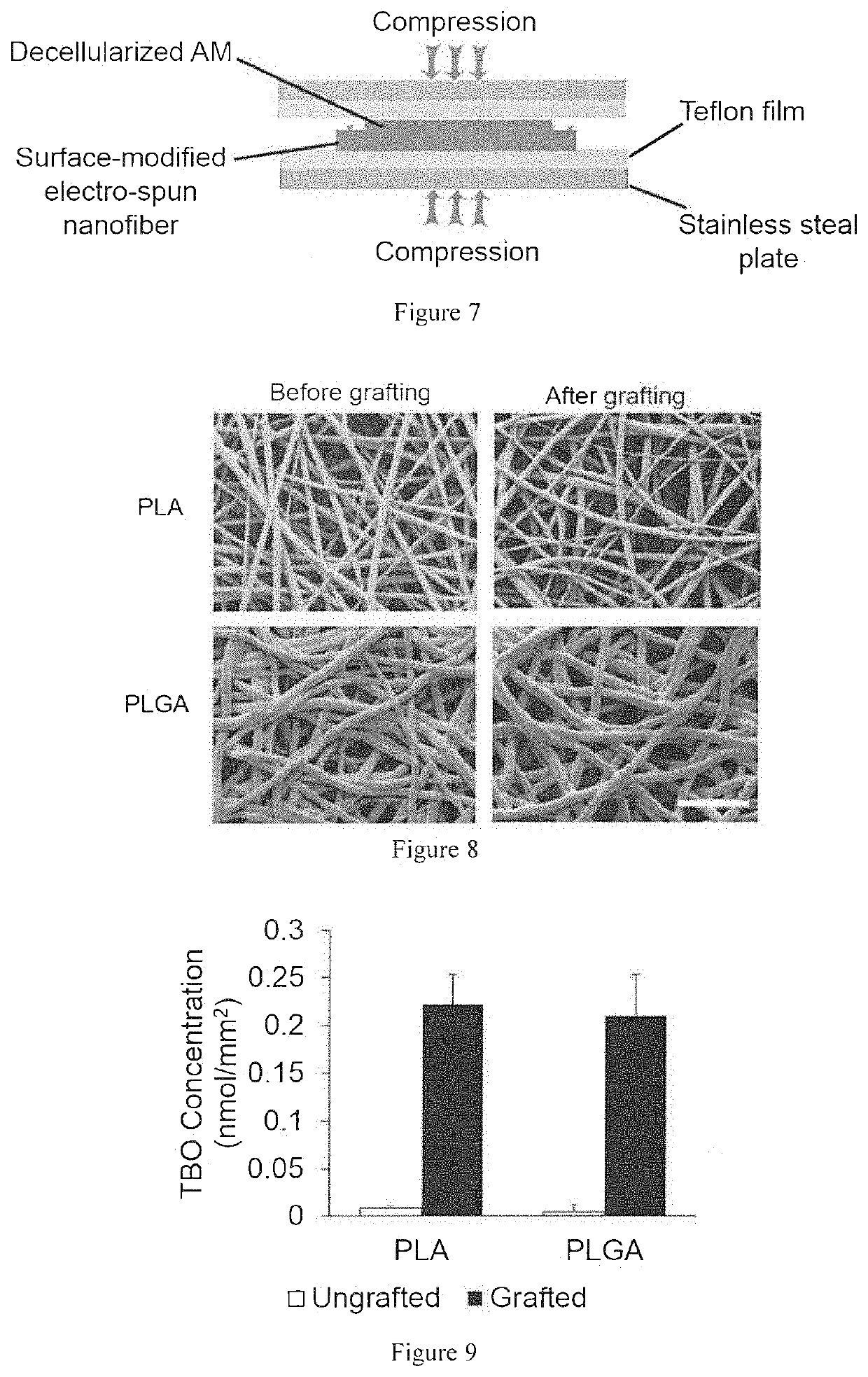A composite membrane comprising a decellularized amniotic membrane and a method for preparing the same
a technology of amniotic membrane and composite membrane, which is applied in the field of biomedical technology and composite membrane, can solve the problems of high cost associated with the preservation and delivery of fresh amniotic membrane, preventing its wide-spread use, and poor mechanical properties and fragile, and significant loss of some bioactive substances
- Summary
- Abstract
- Description
- Claims
- Application Information
AI Technical Summary
Benefits of technology
Problems solved by technology
Method used
Image
Examples
example 1
Preparation and Treatment of PCL Nanofiber Membrane
[0120]1. Preparation of PCL nanofiber membrane: A solution of 12 wt % polycaprolactone (PCL, MW 70 kDa, Sigma-Aldrich) was prepared. A certain amount PCL particles were weighed and dissolved in a solution of dichloromethane: methanol=4:1 at a final concentration of 12%. The PCL solution was added to a syringe, and a 27 G syringe needle was mounted. The entire syringe was placed on a motor-driven syringe pump, and was propelled with a voltage of 12 kV at an injection speed of 2.5 mL / h. A grounded tin foil paper was used to receive the ejected PCL nanofibers to form a nanofiber membrane with a membrane thickness of 80 μm, and the average diameter of the PCL nanofibers was 517 nm (517±178 nm).
[0121]According to the above process, the PCL nanofiber membranes with thicknesses of 40 μm, 80 μm and 120 μm were prepared.
[0122]2. Surface treatment of PCL nanofiber membrane: the process was shown in FIG. 1.
[0123]1) The PCL nanofiber membrane w...
example 2
Decellularization Treatment of Amniotic Membrane
[0129]Fresh amniotic membrane was attached to a nitrocellulose membrane, with epithelial side up. A solution of 2.5% Dispase (Millipore) was prepared and dissolved in DMEM / F12 serum-free medium (Life Technology). The amniotic surface was covered with the enzyme solution, treated at 4° C. for 4 hours, and washed with PBS for 3 times. The amniotic membrane was placed in PBS solution and placed under a stereoscope. Epithelial cells were scraped off by using an Iris spatula from left to right, top to bottom. Under the stereoscope, it could be seen that white cell debris fell into PBS solution. The amniotic membrane was washed with PBS solution for 3 times.
[0130]The thickness of the decellularized amniotic membrane was between 20 μm and 40 μm. The amniotic membrane was observed by optical microscope and scanning electron microscope before and after the decellularization, and the results were shown in FIG. 5 (scale bar: 20 μm). FIGS. 5a and ...
example 3
Preparation of Decellularized Amniotic Membrane-PCL Nanofiber Composite Membrane (“PCL-dAM Composite Membrane” For Abbreviation)
[0133]In an ultra-clean bench, the PCL nanofiber membrane was washed three times with PBS. The decellularized amniotic membrane with epithelial side down and stromal side up was spread out on the surface of Teflon (Polytetrafluoroethene, PTFE) film. The PCL nanofiber membrane was placed on the stromal side of the amniotic membrane. After that, another Teflon film was placed on the nanofiber membrane. The stacked decellularized amniotic membrane, the PCL nanofiber membrane and the Teflon films were placed between two stainless steel plates. The steel plates were placed in a vise, to which a compression of 5 to 7 MP was applied, and stayed at 4° C. for 12 hours. A condensation reaction was carried out between the carboxyl group on the surface of the PCL nanofiber membrane and the amino group on the surface of the decellularized amniotic membrane, and the reac...
PUM
| Property | Measurement | Unit |
|---|---|---|
| temperature | aaaaa | aaaaa |
| diameter | aaaaa | aaaaa |
| diameter | aaaaa | aaaaa |
Abstract
Description
Claims
Application Information
 Login to view more
Login to view more - R&D Engineer
- R&D Manager
- IP Professional
- Industry Leading Data Capabilities
- Powerful AI technology
- Patent DNA Extraction
Browse by: Latest US Patents, China's latest patents, Technical Efficacy Thesaurus, Application Domain, Technology Topic.
© 2024 PatSnap. All rights reserved.Legal|Privacy policy|Modern Slavery Act Transparency Statement|Sitemap



